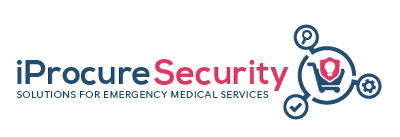317Documents
Help to improve our database
We are continuously collecting information related to the Emergency Medical Services in Europe. Help us improve our content and fill out the online form.
If you are not able to find what you are looking for, please let us know by sending us a message through our contact page.
Your feedback is important for us and it will be fed into our Database for EMS courses.
Open knowledge formEmergency medical services systems in the European Union : report of an assessment project co-ordinated by the World Health Organization
- Language: English
- Tags: Medical Treatment
Description
World Health Organization, Regional Office for Europe & European Union. (2008). Emergency medical services systems in the European Union: report of an assessment project co-ordinated by the World Health Organization. Copenhagen: WHO Regional Office for Europe.
WHO generic essential emergency equipment list
- Language: English
- Tags: Technology
Description
World Health Organization, Regional Office for Europe & European Union. (2008). Who generic essential emergency equipment list.
Innovative Health Technologies and Start-Ups Process in Healthcare Industry
- Language: English
- Tags: Safety and Situational Awareness
Description
This chapter of Healthcare 4.0 discusses an innovative health technology and development process in the healthcare industry, challenges and trends in the healthcare system, and health technologies for the future. The chapter concludes by recommending methodologies for developing health technology to start-ups and entrepreneurs.
Situated Learning: Legitimate Peripheral Participation
- Language: English
- Tags: Legislation
Description
Connected health: How digital technology is transforming health and social care
- Language: English
- Tags: Gaps and Challenges
Description
Modeling Emergency Medical Services for a Mass Casualty Incident in Road Tunnels
- Language: English
- Tags: Medical Treatment Triage Systems
Description
The road system in Taiwan has expanded with remarkable speed resulting in great concern regarding the response to a mass casualty incident (MCI) by the Emergency Medical Services (EMSs). Accidents in road tunnels have the potential to cause major casualties due to their particular configurations and confined conditions. To meet this sudden demands involving huge uncertainties and complexities, EMSs provided by fire services need to be better prepared and more efficient. The recent research into EMS response to MCI aims at identifying effectiveness of life preservation and strategies of emergency mobility through outcome indicators to evaluate performance for different aspects of disaster management. However, the conducting of experimental studies is either impossible or ethically inappropriate. This study tries to use realistic injury statistics for EMS simulations based on medical records of a previous case study and an EMS database currently used in Taiwan. These statistics are temporarily used in a proposed trial MCI/EMS model where injury entities evolve in the medical response model, i.e. the model focuses only on the prehospital phase which includes triage, treatments at the scene and transportation processes - to understand the utilization of resources including Emergency Medical Technicians and ambulances. The outcome indicators also highlight the length of waiting including both before treatment at the Medical Post and before departure at the Delivery Post for each serious injury, and the total operation time to review the emergency response plan for an incident in Hsuehshan tunnel. This study also illustrates how such a model could be used to assess the impact on resource availability, implemented prioritization rule and various other strategies relating to emergency management.

